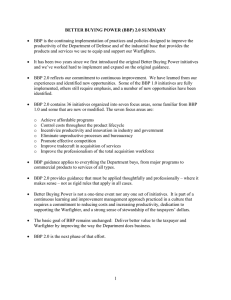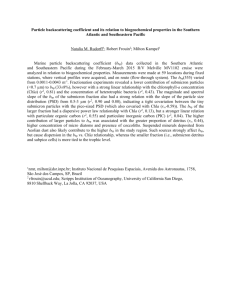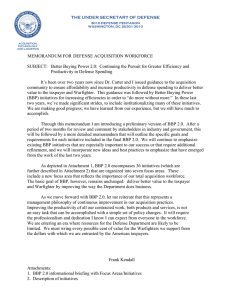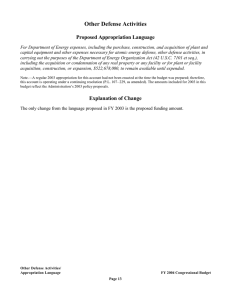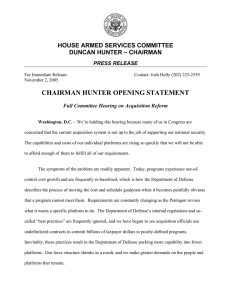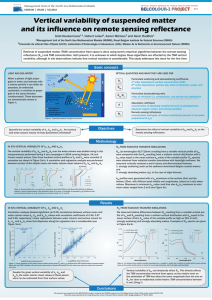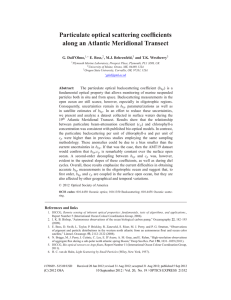What is Better Buying Power?
advertisement
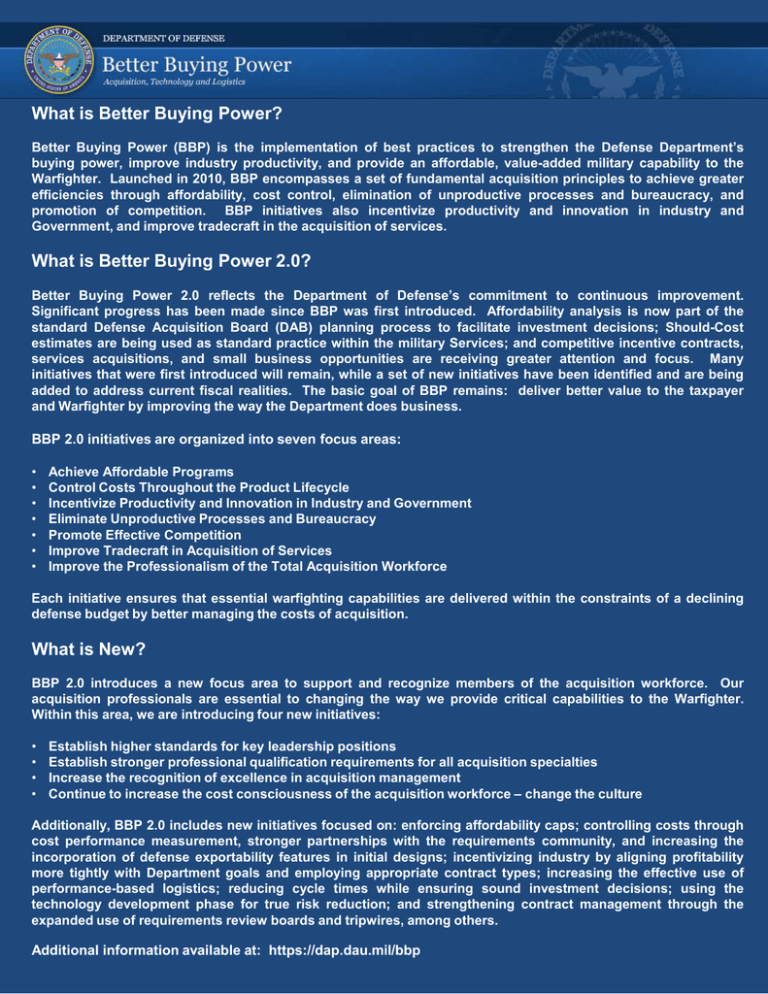
What is Better Buying Power? Better Buying Power (BBP) is the implementation of best practices to strengthen the Defense Department’s buying power, improve industry productivity, and provide an affordable, value-added military capability to the Warfighter. Launched in 2010, BBP encompasses a set of fundamental acquisition principles to achieve greater efficiencies through affordability, cost control, elimination of unproductive processes and bureaucracy, and promotion of competition. BBP initiatives also incentivize productivity and innovation in industry and Government, and improve tradecraft in the acquisition of services. What is Better Buying Power 2.0? Better Buying Power 2.0 reflects the Department of Defense’s commitment to continuous improvement. Significant progress has been made since BBP was first introduced. Affordability analysis is now part of the standard Defense Acquisition Board (DAB) planning process to facilitate investment decisions; Should-Cost estimates are being used as standard practice within the military Services; and competitive incentive contracts, services acquisitions, and small business opportunities are receiving greater attention and focus. Many initiatives that were first introduced will remain, while a set of new initiatives have been identified and are being added to address current fiscal realities. The basic goal of BBP remains: deliver better value to the taxpayer and Warfighter by improving the way the Department does business. BBP 2.0 initiatives are organized into seven focus areas: • • • • • • • Achieve Affordable Programs Control Costs Throughout the Product Lifecycle Incentivize Productivity and Innovation in Industry and Government Eliminate Unproductive Processes and Bureaucracy Promote Effective Competition Improve Tradecraft in Acquisition of Services Improve the Professionalism of the Total Acquisition Workforce Each initiative ensures that essential warfighting capabilities are delivered within the constraints of a declining defense budget by better managing the costs of acquisition. What is New? BBP 2.0 introduces a new focus area to support and recognize members of the acquisition workforce. Our acquisition professionals are essential to changing the way we provide critical capabilities to the Warfighter. Within this area, we are introducing four new initiatives: • • • • Establish higher standards for key leadership positions Establish stronger professional qualification requirements for all acquisition specialties Increase the recognition of excellence in acquisition management Continue to increase the cost consciousness of the acquisition workforce – change the culture Additionally, BBP 2.0 includes new initiatives focused on: enforcing affordability caps; controlling costs through cost performance measurement, stronger partnerships with the requirements community, and increasing the incorporation of defense exportability features in initial designs; incentivizing industry by aligning profitability more tightly with Department goals and employing appropriate contract types; increasing the effective use of performance-based logistics; reducing cycle times while ensuring sound investment decisions; using the technology development phase for true risk reduction; and strengthening contract management through the expanded use of requirements review boards and tripwires, among others. Additional information available at: https://dap.dau.mil/bbp BBP PROGRAM SUCCESSES Stryker The Army generated considerable savings in the Stryker program by combining FY12 buys of 292 Double V-Hulls and 100 Nuclear BioChemical Reconnaissance vehicles into a single contract, gaining economies of scale, and is estimating up to 5 percent savings in its production of JTRS Handheld radios through incentives to incorporate commercial components and technologies. F-22 The F-22 System Program Office realized a 15 percent efficiency during Increment 3.2A negotiations using Should Cost analysis. The Air Force successfully identified and implemented specific cost saving initiatives to address areas in the software development process that were above industry benchmarks. This effort resulted in a 15 percent reduction and $32 million savings in cost for Increment 3.2A. DDG 51 The Navy utilized a competitive allocation strategy for the FY11 and FY12 DDG 51 class ships called Profit Related to Offers (PRO). This strategy utilizes Fixed Price Incentives – Firm Target (FPIF) contracts with priced options to ensure reasonable prices while maintaining the industrial base. The result of the competitive allocation was a 12 percent reduction in basic construction costs of the three ships at Bath Iron Works (BIW) and Huntington Ingalls Incorporated (HII) and government savings of $298 million. This strategy will be repeated for the FY13-17 DDG 51 Multi-year procurement. Additional information available at: https://dap.dau.mil/bbp
